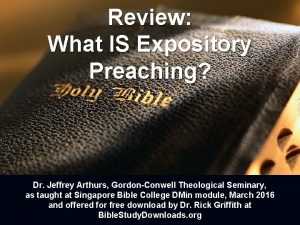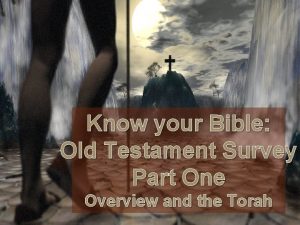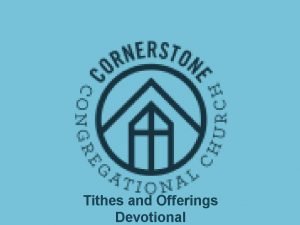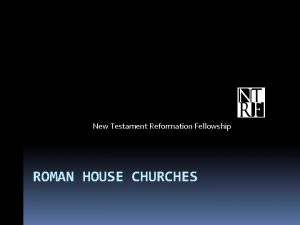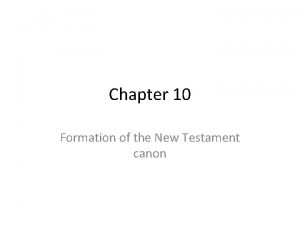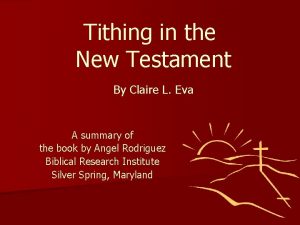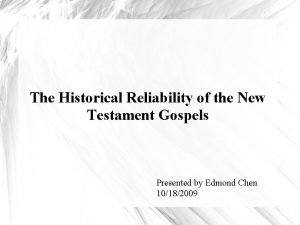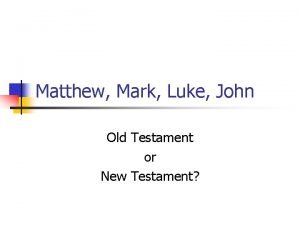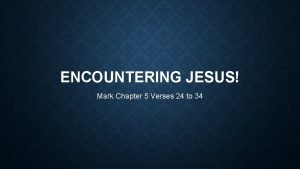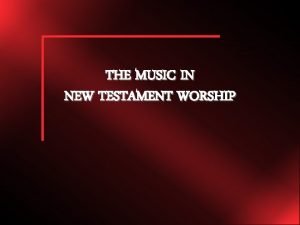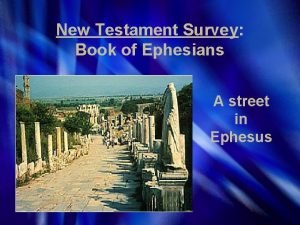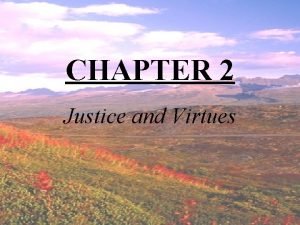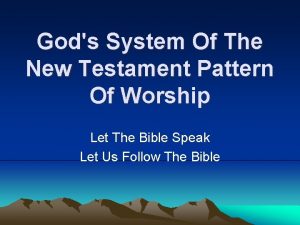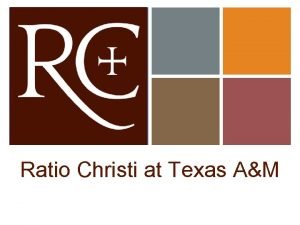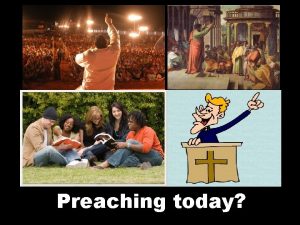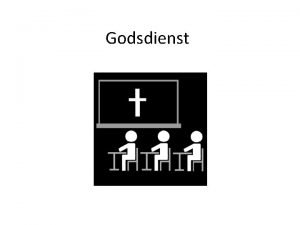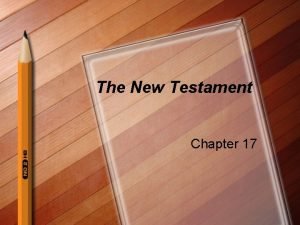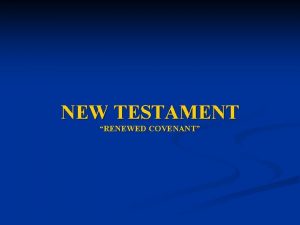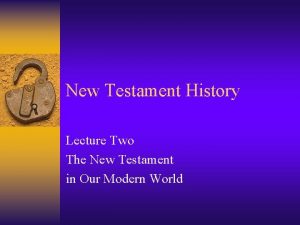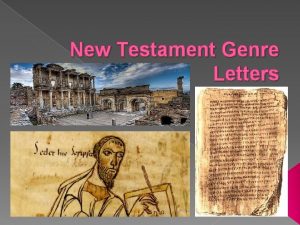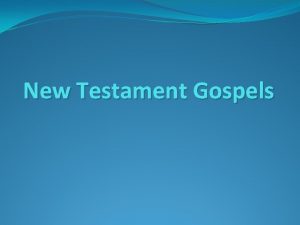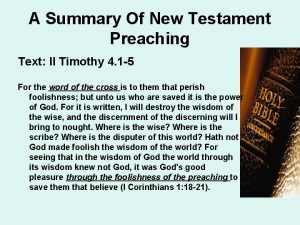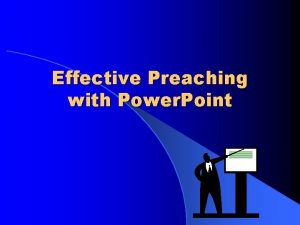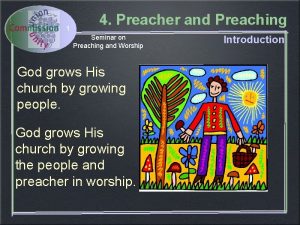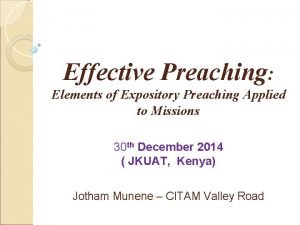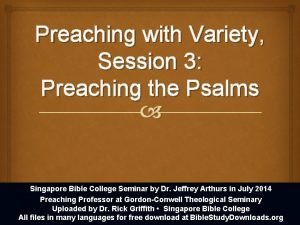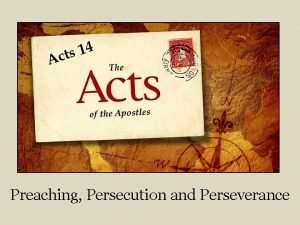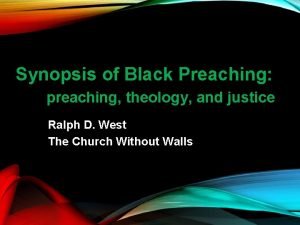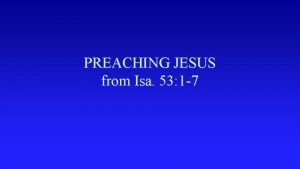PREACHING in the New Testament PART ONE PREACHING





















- Slides: 21

PREACHING in the New Testament

PART ONE. PREACHING IN THE Old Testament • I. Two Activities • A. Prophetic Proclamation: baser (joy): announcing good news or a message of joy (2 Sam. 4: 10; Ps. 40: 9; Isa. 40: 9) • B. Teaching of Torah: qera (to proclaim or to call) • Jer. 11: 6; Mic. 3: 5; Jonah 1: 2

II. The Preaching of Jeremiah • A. Jeremiah 20: 7 -9 • B. His call was irreversible • God’s word was irrepressible: “fire shut up in his bones” • “The fire can be quenched only one way: by preaching. ”

Part Two. Terms for Preaching in the New Testament • A. Two Primary Terms • 1. Kerusso—”to announce or proclaim publicly” • a. Mk. 1: 14 Jesus came into Galilee preaching • b. I Cor. 1: 23 we proclaim Christ crucified • c. Acts 10: 42, 43 commanded us to preach, to testify that he is the One ordained by God as judge of the living and the dead

2. Euanggelizo “to bring or announce good news” • Acts 17: 23 “to proclaim’ “I proclaim the unknown God. . “ • I Peter 2: 9 “to declare” “the wonderful deeds of God who called you out of darkness” • Acts 17: 30 “to command” commands all people everywhere to repent

B. Models of Preaching

1. Message of the Baptizer • a. a baptism of repentance for the forgiveness of sin (Mark 1: 4; Luke 3: 3) • b. preparation for the Coming of One stronger than he (Mk. 1: 8) • c. ethical instruction (Lk. 3: 10 -14) • d. In GJn: bearing witness to Jesus as the Christ

2. The Proclamation of Jesus • The gospel of God (Mk. 1: 14) • The gospel of the kingdom (Mt. 4: 23) • The gospel of the kingdom of God (Lk. 4: 43)

Summation of the Dominical Proclamation in Mark 1 • • Time is filled full The kingdom of God is at hand Repent Believe

Synopsis in Luke 4 (Isa 61) • • • Good news to the poor Release to the captives Sight to the blind Liberty to the oppressed The year of God’s favor • PS: a new era, the reign of God is breaking in

3. Early Missionary Sermons in Acts, primarily Peter and Paul • The Basic Kerygma or preaching prophecies are fulfilled new age has arrived life, death and resurrection of Jesus call to decision (CH Dodd, The Apostolic Preaching and its Development)

4. The Pauline Preaching • a. The Primitive Tradition of I Cor. 15: 1 ff: what terms I preached the gospel 1) Jesus died for our sins “acc. to the scriptures” 2) was buried 3) was raised up on the third day, “acc. to the scriptures” 4) has appeared to his followers

b. Governing centers of the Pauline preaching: • Death of Jesus • Resurrection as Exalted Lord

c. His mission to preach • I Cor. 1: 17: “For Christ did not send me to baptize but to preach the gospel” • I Cor. 9: 16: “Woe to me if I do not preach the gospel”

d. Possible Sample of Pauline Preaching • Romans 1 -4 (Paul Althaus)

5. Hebrews, the earliest extant sermon? • An expository sermon on the wilderness generation

C. Audiences and Corresponding Proclamations • 1. Audiences that knew the Hebrew Bible a. Acts 2: 16 -36 (Pentecost) b. 3: 12 -26 (Solomon’s Portico) c. 13: 16 -41 (Antioch)

2. Audiences totally unfamiliar with the Scripture • A. 14: 8 -17 (Lystra) • B. 17: 22 -31 (Areopagus)

PART THREE. WITNESS IN THE NT • A. CORRECTION OF SELWYN • B. THE WORK OF ALLISON TRITES

C. WITNESS IN THE CONTEXT OF A TRIAL • • 1. A Sustained Metaphor in a. GJn b. Book of Acts c. Apocalypse

2. Focus on the Johannine Lit. • a. Gospel of John: an evangelistic witness to the significance of Christ, aiming at faith • b. Witness in 1 John
 Homiletical idea
Homiletical idea Where is havilah in the bible
Where is havilah in the bible Tithe in new testament
Tithe in new testament House churches in the new testament
House churches in the new testament Tithe in new testament
Tithe in new testament Encountering jesus in the new testament answer key
Encountering jesus in the new testament answer key Encountering jesus in the new testament
Encountering jesus in the new testament Formation of the new testament canon summary
Formation of the new testament canon summary Tithing in the new testament
Tithing in the new testament The historical reliability of the gospels
The historical reliability of the gospels Test: the general epistles new testament survey
Test: the general epistles new testament survey New testament reformation fellowship
New testament reformation fellowship John old or new testament
John old or new testament Encountering jesus in the new testament
Encountering jesus in the new testament Titus in the bible summary
Titus in the bible summary Music in new testament
Music in new testament New testament survey book
New testament survey book Justice and virtue
Justice and virtue 27 new testament books
27 new testament books New testament pattern of worship
New testament pattern of worship New testament canon
New testament canon Flesh and bone
Flesh and bone
